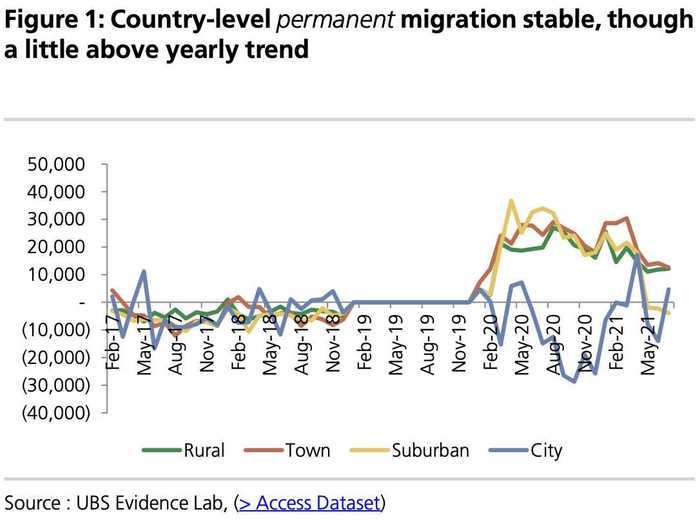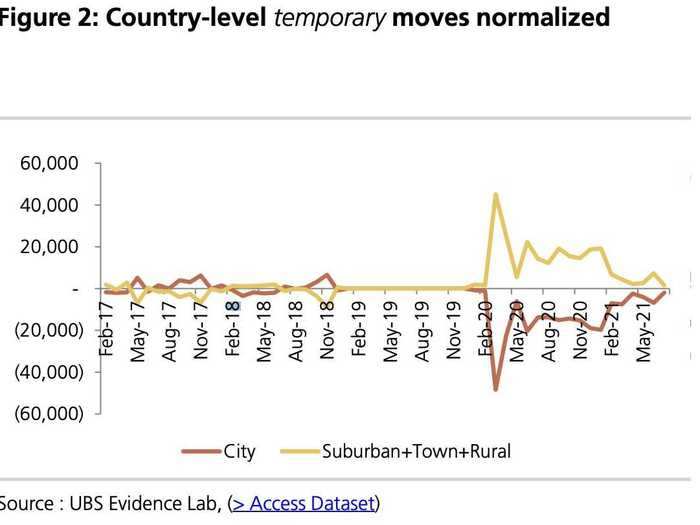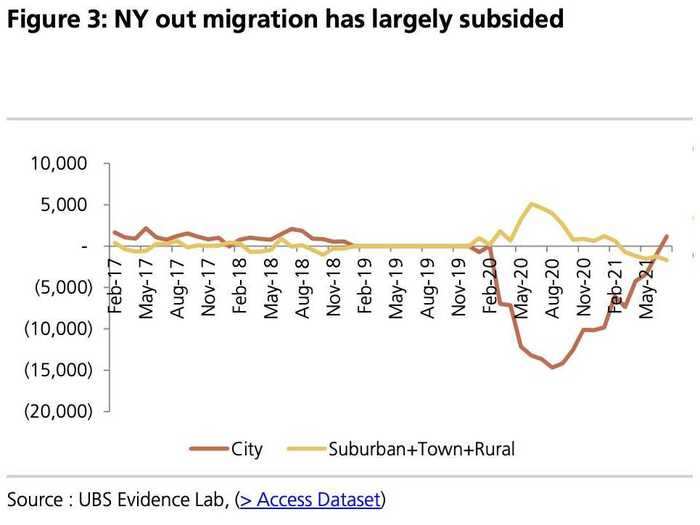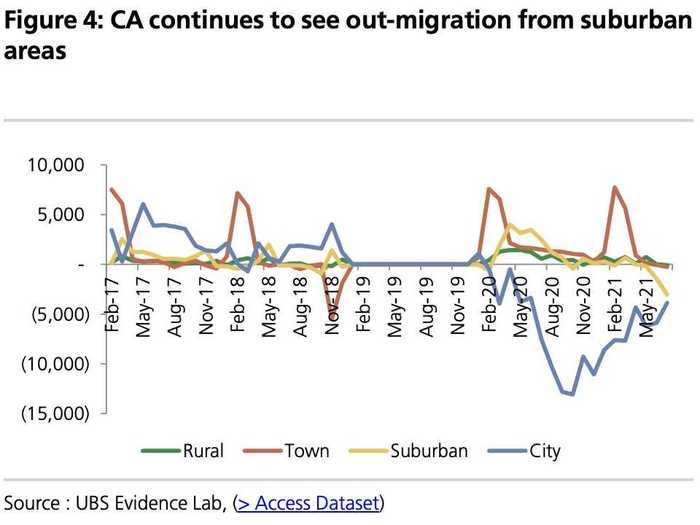A mover puts belongings into a moving truck following the outbreak of the coronavirus disease (COVID-19) in the Manhattan borough of New York City, New York, U.S., September 1, 2020.Carlo Allegri/Reuters
- The migration from cities "has largely ceased" and urban occupancy is rebounding, UBS said Monday.
- People fled cities earlier in the pandemic for cheaper and more rural "exurbs."
- New data show that reversing course and how cities are recovering, along with which ones are leading the way.
After shedding residents through much of the pandemic, cities are bouncing back.
The onset of lockdowns in early 2020 eroded the appeal of the US's largest cities. Residents looking for more space and cheaper housing fled metropolitan areas in large numbers, with New York City, San Francisco, and Los Angeles seeing huge out-migration.
And as city populations shrank, the exurbs thrived. These neighborhoods - characterized by affordable housing, low population density, and a reasonable weekly commute - saw strong gains in occupancy as city-dwellers flocked to the once-neglected areas.
That population shift is now reversing course, according to UBS economists. The exodus from urban centers "has now largely ceased" and returned to its historical trend, the team led by Ajit Agrawal said, citing nationwide change-of-address data. The next few months will reveal just how quickly urban populations can return to their pre-pandemic highs, the team added.
Four charts from the Monday UBS note shed more light on cities' rebound.
1. Permanent moves to cities are up
UBS
The outflow of residents from cities to suburbs and exurbs has slowed for permanent movers, and cities are once again growing. Urban population growth was steady across all metropolitan areas tracked by UBS.
That uptick is a "positive trend" for cities after several months of plunging occupancy, the team said. Still, it'll take months for urban areas to return to their pre-crisis density. The speed of that rebound depends on when large-scale employers call workers back to offices, and how many workers who left cities are willing to return, the economists said.
2. Temporary moves out of cities are back to normal
UBS
Temporary mover data signal the shift from cities to suburbs and exurbs has almost entirely ended. The return to trend is most likely fueled by companies' return-to-office efforts.
While promising for cities looking to recoup residents, the recent uptick in virus cases presents a new hurdle for their recoveries. Daily case counts are now the highest since January as the Delta variant of COVID-19 spreads across the US. A return to partial lockdowns could revive the out-migration seen last year.
3. New York is on the rise
UBS
It's possible New York City will be the first city to stage a full recovery in occupancy, as residency began climbing in late May, according to UBS. At the same time, suburbs, towns, and rural areas started to lose residents in late February.
The rebound is likely a product of financial firms and major banks having some of the strictest return-to-office policies, analysts at Jefferies said in a July 25 note. The push for in-person work fueled a "scramble for apartments" and put New York City in the lead among major US metropolitan areas regaining occupants, they added.
4. California's cities aren't far behind
UBS
California cities show similar trends but aren't as far along in their rebounds. While out-migration has slowed markedly in cities, they're still losing residents, according to UBS. Meanwhile, population growth remains mostly flat in rural areas and towns.
The gap between New York and California cities' recoveries likely has to do with their different return-to-office strategies, Jefferies analysts said in July. While finance giants mandated in-person work early in the summer, the tech giants of Silicon Valley have pushed back their calls to return to offices as virus cases surge higher. New York City saw occupancy grow on net in May and June, according to Jefferies. Conversely, population growth was flat in San Francisco and remained negative in Silicon Valley over the same period.
Virus case counts have only soared higher since change-of-address data was last updated. Should infection trends hold, the split between east- and west-coast cities could power a sharp divergence in how urban economies recover.




